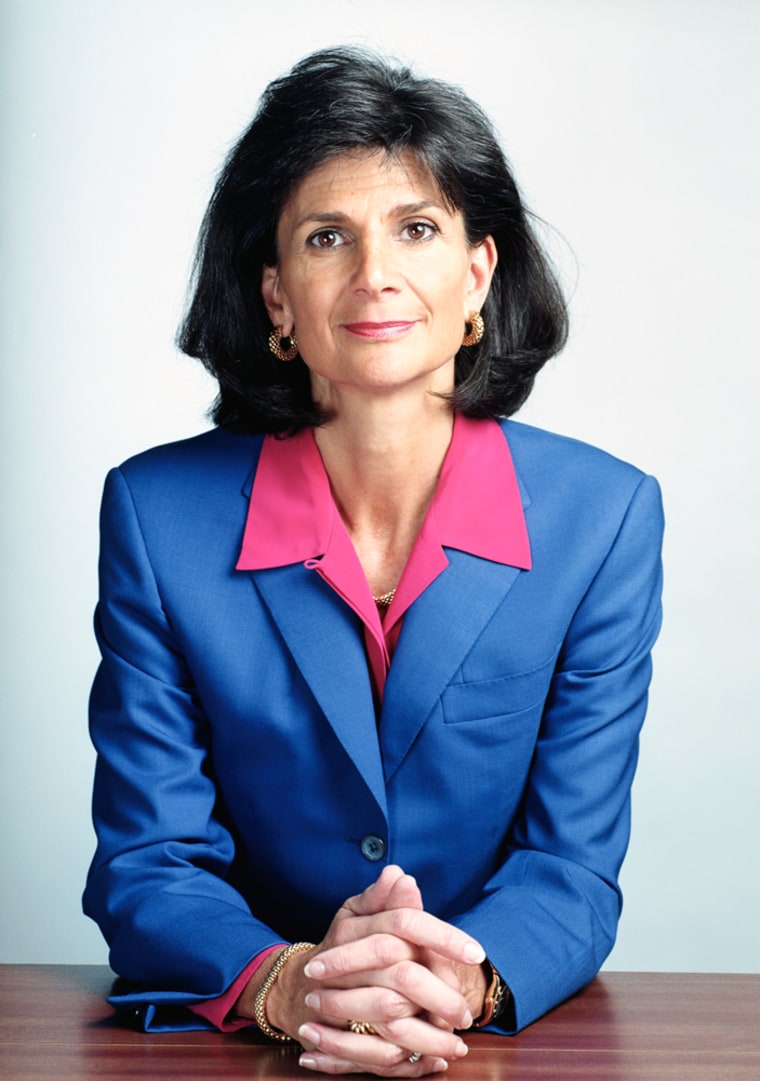Our annual listing of the World's Most Powerful Women has seen a growing number of women with big career successes. A total of 48 women on the list now run businesses either as chief executives or chairmen, up from 35 last year.
And in a sign that women have arrived, they're increasingly being called on to clean up corporate scandals. Women who've mopped up, and who remain high on our list, are Patricia Russo at Lucent Technologies and Anne Mulcahy at Xerox. Both pulled their companies back from the brink of bankruptcy.
But women can be troublemakers, too. They can collapse in scandal as disastrously as men. And because women are still a rarity at the top of the corporate ladder, they often get a lot more attention than their male counterparts on the way up — and on the way down.
The latest power woman to be kicked off our list in a high-profile scandal is Carla Cico, the former chief executive of Brasil Telecom, who was indicted last year on charges of criminal conspiracy after she allegedly hired a risk-consulting firm, a unit of Marsh & McLennan, to spy on competitor Telecom Italia.
Cico joins the ranks of fallen female executives that include Carly Fiorina, who was ousted from Hewlett-Packard last year following disagreements with the board stretching back to HP's 2002 acquisition of Compaq Computer.
Another fallen star: Linda Wachner, who led Warnaco into bankruptcy and an investigation by the U.S. Securities and Exchange Commission before leaving in 2001. Jill Barad was forced out of Mattel in 2000 after the toymaker's stock plummeted 75% in two years. And then there is Martha Stewart, who resigned as chief executive of Martha Stewart Living Omnimedia in 2003 and ended up in prison after being convicted of lying to federal prosecutors during an insider-trading investigation.
Some have recovered with lucrative book and television deals, speaking engagements and board positions. Fiorina has made out particularly well. Her memoir, "Tough Choices," is due out from Penguin this fall, and she's signed on with the Washington Speakers Bureau. She's even reportedly being courted to run for office.
Stewart recently paid a fine of about $195,000 and cannot serve as the director of a public company for five years under a settlement on civil insider trading charges with the SEC. Despite a failed attempt at an "Apprentice"-type show, she has partnered with KB Home to sell Martha-branded houses, signed a deal with Macy's and plans to launch a new magazine, called Blueprint, to cater to "modern, multitasking" women between the ages of 25 and 45.
None is financially hard-pressed to find work. Wachner sued Warnaco for $25 million in severance pay and walked away with $3.5 million in stock. Fiorina left with an estimated $42 million severance package, and Barad's was reportedly worth $50 million. Stewart too continues to pull down a multimillion-dollar salary and maintains several expensive homes.
Even after leaving, some of the executive women still caused trouble for their companies. The New York state comptroller said Barad's package was too big, as did two HP shareholders in a March lawsuit over Fiorina's exit pay.
